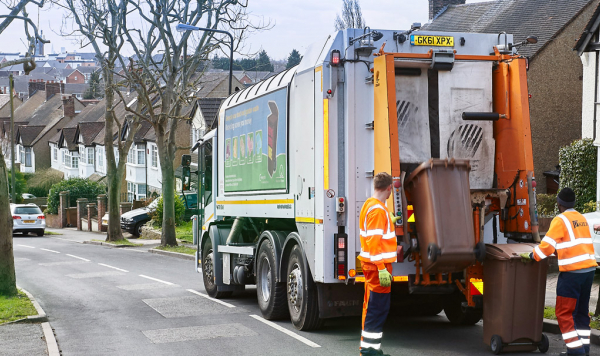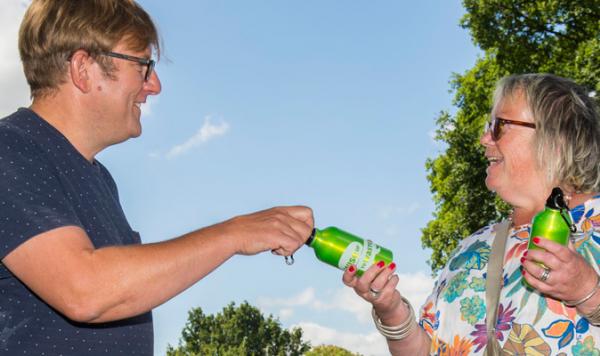Request
Request for information on:
1) The total tonnes of recyclate that the council/authority/partnership managed in 2018/19.
2) The total tonnes of recyclate that the council/authority/partnership managed in 2019/20.
3) The proportion in tonnes, of the 2018/19 recyclate total that the council/authority/partnership managed, which was sent for incineration via either Energy for Waste (EfW) or without Energy for Waste (EfW).
4) The proportion in tonnes, of the 2019/20 recyclate total that the council/authority/partnership managed, which was sent for incineration via either Energy for Waste (EfW) or without Energy for Waste (EfW).
If for any reason one of these of the years' (2018/19 or 2019/20) statistics are not available for release, please just provide me with one year's statistics.
For the purposes of this request, Please understand the term 'recyclate' to mean 'household waste material collected at the kerbside for recycling by a local authority' (e.g. household waste put in a recycling bin, but not separately collected food or garden waste).
Response
NLWA Response
By way of providing some background to the information you have requested, NLWA is the second largest waste disposal authority in the country, handling the recycling for over 2 million Londoners. In 2019-20 we handled over 115,000 tonnes of mixed dry recycling (MDR), which was sorted for processing back into valuable recycled materials. We work in partnership with the seven north London boroughs, which collect the recycling in our area, to provide one of the most extensive recycling services, accepting the widest range of items for recycling. And our programme of waste prevention activities is also one of the most significant in the UK.
The only north London borough for which NLWA does not provide a MDR reprocessing service is Enfield, so LB Enfield handles the recycling of their residents’ waste directly. However, NLWA promotes the recycling services of all seven boroughs and we work with all seven to increase the rates of recycling across the area.
Our aim is to increase recycling rates across north London to 50 per cent, a commitment to maximise recycling which is evidenced by:
- Arrangements in the contract with our recycling services provider, Biffa Waste Services, whereby loads of recycling that contain large but not excessive levels of contamination have the contaminants removed first so that they can still be processed.Recycling contamination occurs when waste such as nappies, food, and textiles are mistakenly put into mixed recycling bins. The recycling is processed at the Edmonton Materials Recycling Facility (MRF) which is owned and operated by Biffa. Biffa also operate their own recycling facilities for processing some types of plastic (HDPE and PET) in North Yorkshire and County Durham. In addition, they use several other recycling companies in the UK to recycle other types of plastics, which do not meet the input specifications of their HDPE or PET facilities. More information about the Biffa MRF and plastics recycling is available on our website at: https://www.nlwa.gov.uk/reducereuserecycle/recycle/plastics-recycling
- Providing our residents with the opportunity to be able to recycle a wide range of materials, including plastic carrier bags, plastic pots, tubs and trays. More information is available in our A-Z of recycling, i.e. about what you can and can’t recycle in north London here: https://www.nlwa.gov.uk/reducereuserecycle/recycle/whatcanwerecycle
- An openness about what happens to the recycled materials which provides confidence that we know about our recycling. We play our part in rewarding the efforts that householders make in separating the materials by investing in providing feedback and information to residents. You can find more information about the end destinations of north London’s recycling on our website at: https://www.nlwa.gov.uk/article/what-happens-my-recycling
- Investment in delivering impactful communications campaigns, providing information and advice. NLWA’s ‘swish and style’ or physical clothes swap events have recently been shortlisted in the ‘Consumer engagement/marketing campaign of the year’ category of Edie’s sustainability leaders’ award for example. We run fortnightly webinars on recycling and Facebook Live question and answer sessions on a monthly basis too. Details of upcoming events are available on the events page of our website: https://www.nlwa.gov.uk/events
- We also reward charities for recycling by paying reuse and recycling credits to non-profit organisations who recycle. In 2019-20 we paid over £169,000 in such credits.
- Investment in innovative schemes to increase recycling and reduce waste. We operate a £70,000 plus, Borough Recycling Fund in conjunction with Biffa. The Fund has been established to support new and innovative projects to help increase recycling rates across north London as well as tackle the problem of ‘recycling contamination’. We also operate a £60,000 Waste Prevention Community Fund which provides charities with financial support for innovative waste prevention projects to reduce the amount of material that’s thrown away.
- And finally we are continuing to make significant investment in infrastructure to extract more recycling. In August 2020 we announced that NLWA had awarded a major UK construction company, VINCI Construction UK Limited trading as Taylor Woodrow, with the contract to build flagship recycling facilities at the Edmonton EcoPark. This £100m investment will not process the recycling from the household recycling collections which Biffa already sort for us, but will instead extract as much material as possible for recycling from other types of borough collected waste such as bulky waste collections. For the first time there will also be a publicly accessible Reuse and Recycling Centre on the EcoPark which will be built as part of the contract. More information about this new Resource Recovery Facility (RRF) is available on the North London Heat and Power Project website. This investment in additional modern recycling infrastructure is a vital catalyst for the local green recovery and NLWA’s efforts to increase recycling rates across north London to 50 per cent.
- In November 2020 we signed a lease with Seneca Resource Recovery to operate a waste transfer station and recycling plant from their Wembley site. Our main waste contractor, LondonEnergy Ltd, now operates the facility, which will include a new materials recycling picking line. In a further boost to north London’s efforts to drive up recycling rates the new picking line will allow additional recyclable material to be extracted from the waste stream.
Whilst we are doing our utmost to encourage residents to increase their recycling and to extract all we can from the material that comes to us, it is also necessary for government to take more action. We have welcomed the ban on some single-use plastics for example, but we have also called for the government to go further and ban a wider range of single-use, difficult to recycling items. NLWA delivers an extensive programme of activity designs to support residents to waste less and recycle more. But without the introduction of compulsory recycling , accompanied by real powers for local authorities, we won't see the progress on recycling rates that residents, local authorities, and the environment, so desperately need.
Turning to the specific information you have requested:
1) In 2018/19 the Authority handled 113,479 tonnes of MDR. NLWA did not handle all of the recycling collected in north London because London Borough of Enfield does not send its recycling through NLWA, although it still goes to the Biffa MRF for sorting. This information is freely available in paragraph 1.4 of the 2019/20 Annual Report available on the weblink below. The total recycling tonnage information for all seven boroughs is also freely available by calculating the tonnages from the percentages of household waste sent to different disposal routes (Chart 2) in our 2018/19 Annual Report available on our website here: https://www.nlwa.gov.uk/ourauthority/our-reports
2) In 2019/20 the Authority handled 115,344 tonnes of MDR for recycling. This tonnage information is freely available in Table 2 of the 2019/20 Annual Report available on our website here: https://www.nlwa.gov.uk/ourauthority/our-reports This was an increase of an increase of 1,865 tonnes or 0.02% on the previous year.
3) All of the MDR that the Authority handled in 2018/19 was sent for sorting for recycling. None of the recycling was sent directly for incineration with or without energy recovery.
However, a proportion of the recyclate that was delivered to the MRF was found to be too contaminated for the MRF to accept on arrival. The contaminated recyclate is rejected because residents have put non-recyclable material in their bins, such as food, nappies, general waste and clothing which means the recyclable material can’t be recycled. Biffa makes the arrangements for the disposal of the rejected contaminated material. In 2018/19 the recycling from north London included 15,488 tonnes of material which was too contaminated to recycle. This waste was disposed of through energy form waste facilities which is the next option within the waste hierarchy. For the avoidance of doubt the 15,488 tonnes is additional to the 113, 479 tonnes which was successfully recycled.
4) All of the MDR that the Authority handled in 2019/20 was sent for sorting for recycling. None of the recycling was sent directly for incineration with or without energy recovery.
However, a proportion of the recyclate that was delivered to the MRF was found to be too contaminated for the MRF to accept on arrival. The contaminated recyclate is rejected because residents have put non-recyclable material in their bins, such as food, nappies, general waste and clothing which means the recyclable material can’t be recycled. Biffa makes the arrangements for the disposal of contaminated material. 2019/20 the recycling from north London included 17,763 tonnes of material which was too contaminated to recycle. This waste was disposed of through energy from waste facilities which is the next option within the waste hierarchy. For the avoidance of doubt the 17,763 tonnes is additional to the 115,344 tonnes which was successfully recycled.
In summary:
- There was an increase in the total amount of useable recyclate that residents put in their collections, and which NLWA processed between 2018/19 and 2019/20.
- However, residents also put in their recycling bins increasing volumes of non-recyclable materials. There was an increase from 15,488 tonnes to 17,763 tonnes in the material in recycling bins which could not be processed as recycling and so had to be disposed of as energy from waste.
This explains why the Authority undertakes communications campaigns including raising awareness of contamination (https://www.nlwa.gov.uk/campaigns-and-projects/bin-your-nappy) and emphasising the importance of recycling (https://saveourstuff.co.uk/watch-stuff).
I trust this response answers your questions, but if I can be of any further assistance please do not hesitate to contact me.


